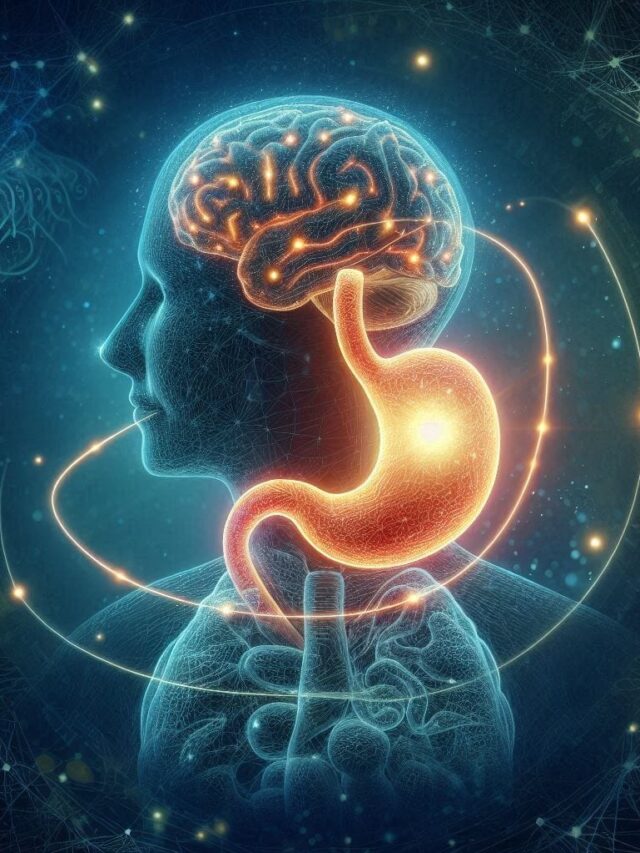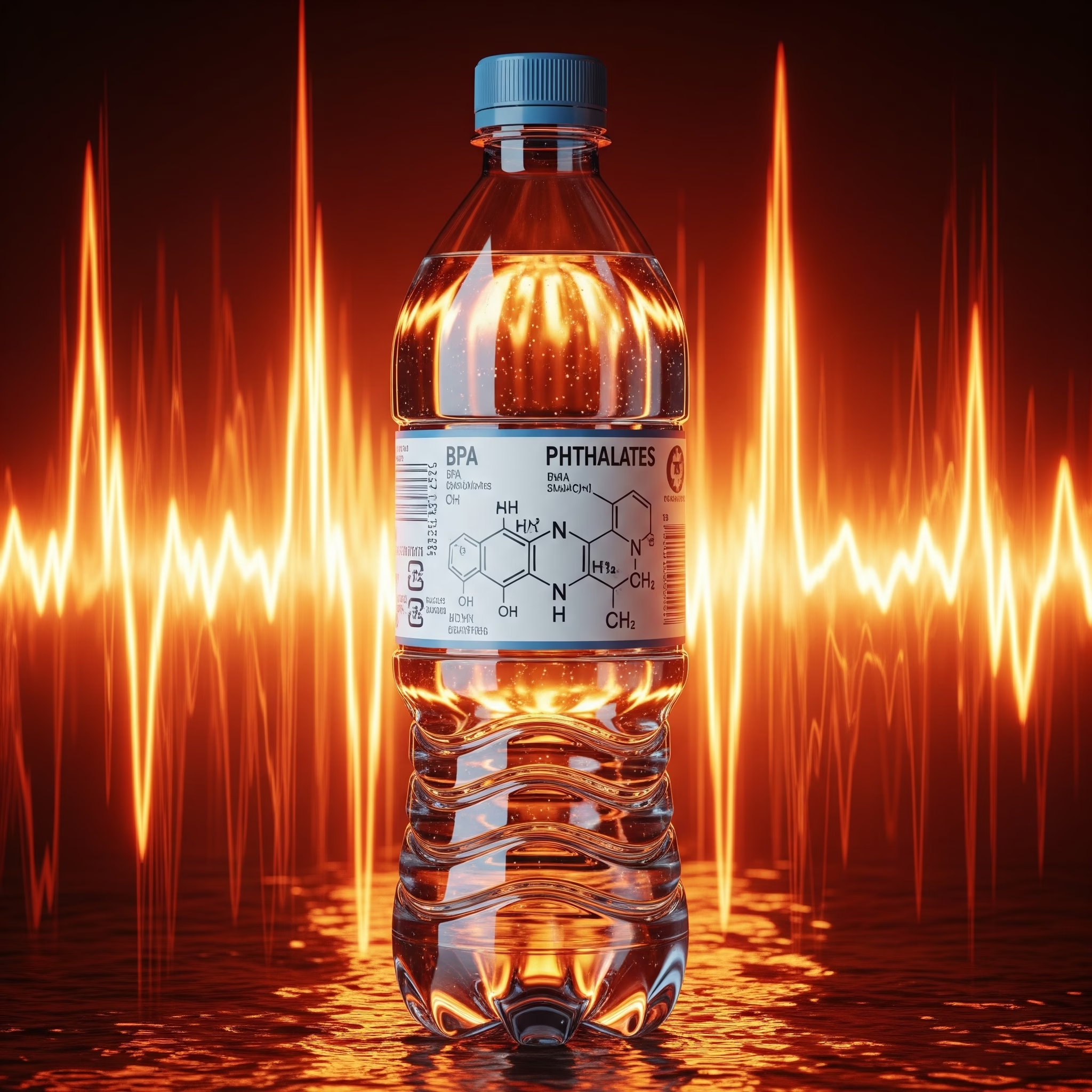Wait—You’re Leaving That Water Bottle in the Car?
We’ve all done it. You hop out of the car, arms full, mind racing, probably late for something—and that half-empty plastic water bottle rolling around in the cup holder? Totally forgettable. No big deal, right?
Well, not exactly.
It turns out that the seemingly harmless habit of leaving water bottles in your car—especially on warm days—isn’t just messy or unsightly. It could actually be dangerous. To your health. To your car. And even, weirdly enough, to fire safety.
Let’s break this down. Because, honestly, this one catches a lot of folks off guard.
Heat + Plastic = A Toxic Brew?
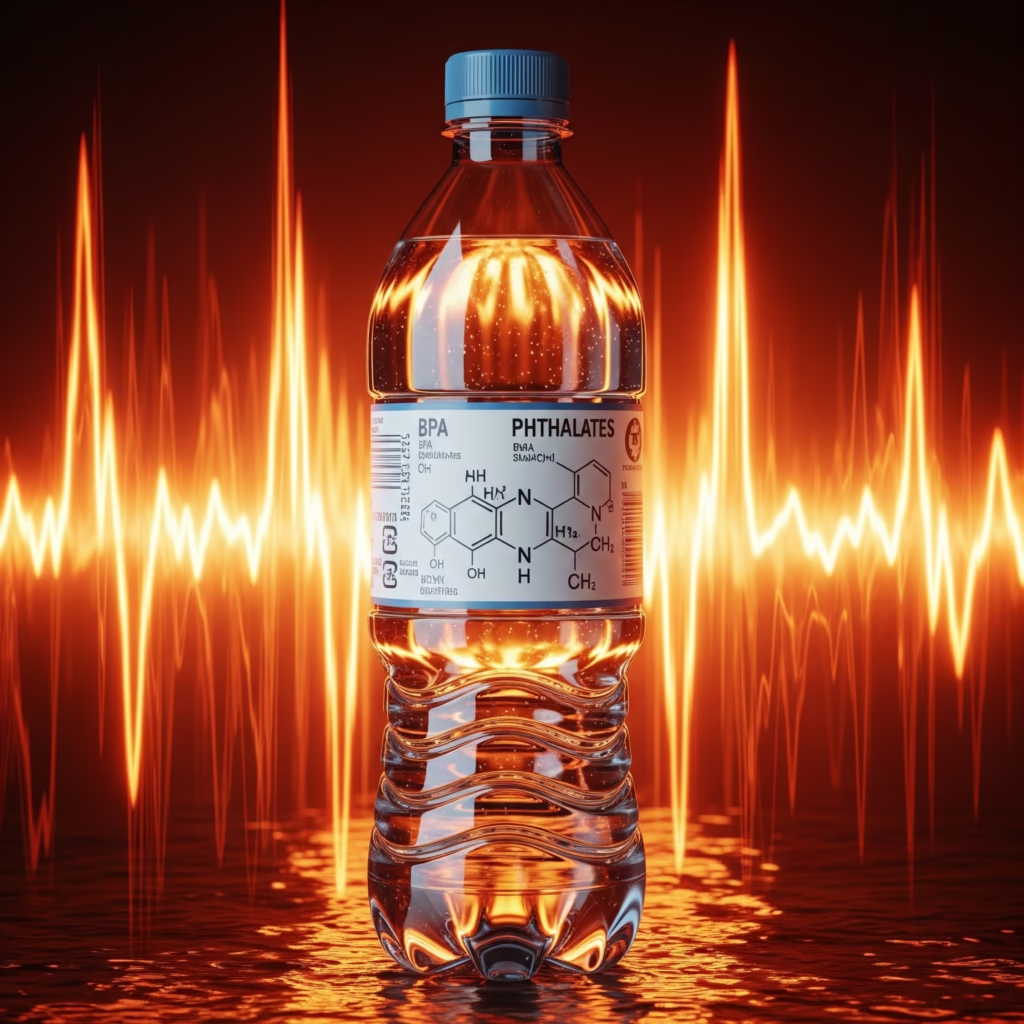
Let’s start with science.
When plastic bottles are exposed to heat—like, say, in a locked car baking in the sun—they can start to leach chemicals. Specifically, compounds like Bisphenol A (BPA) and phthalates, which are often found in single-use plastics.
Now, if you’re the type who’s swapped all your home containers for glass and avoids microwaving Tupperware, you already know where this is going.
Studies (including work from the NIH and Environmental Working Group) have shown that BPA can disrupt hormonal balance—especially estrogen—and potentially mess with things like fertility, metabolism, and even brain development. Phthalates aren’t much better. They’ve been linked to liver and kidney issues and can act as endocrine disruptors, too.
So, imagine your plastic bottle—already not the cleanest item—heating up to 120°F or more (easily achievable in a closed car on a mild spring day), and then you take a sip?
Yeah. That’s the chemical cocktail we’re talking about.
But Isn’t It “Just Water”?
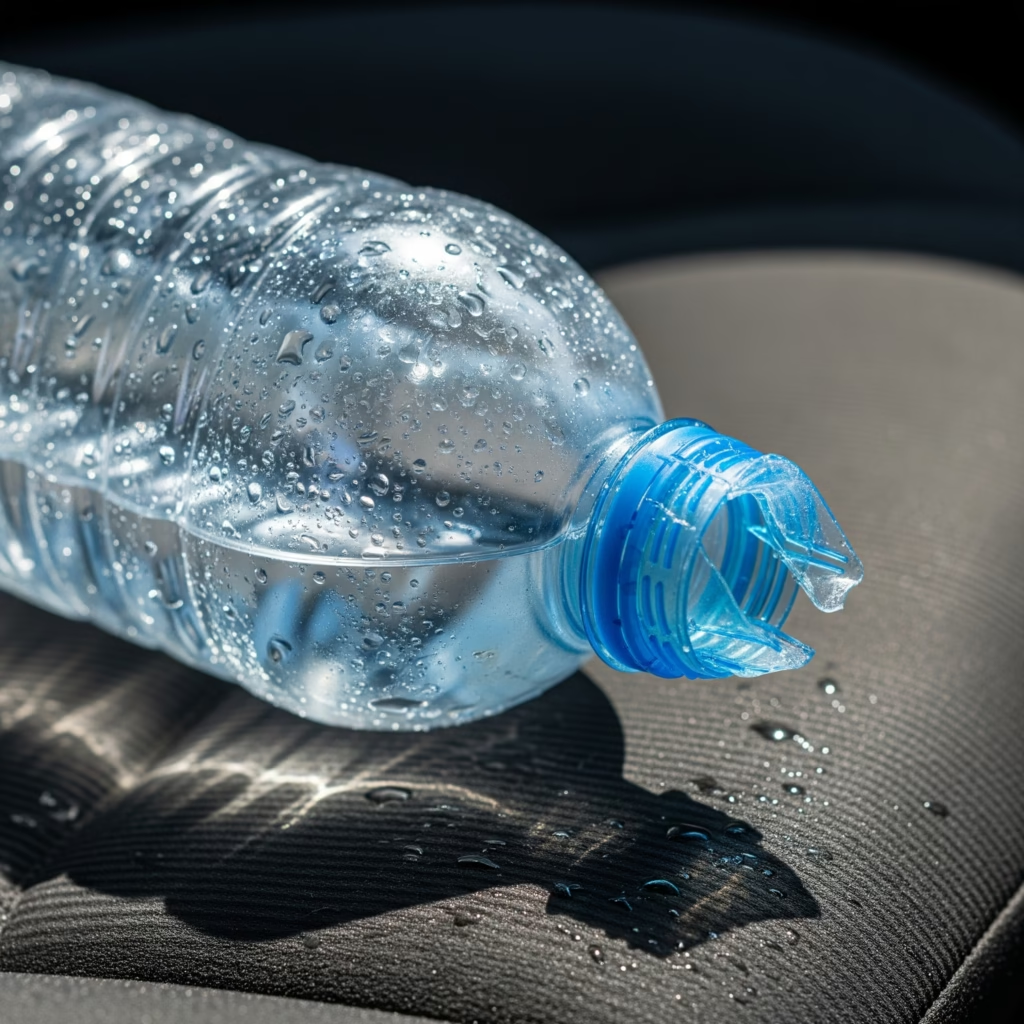
That’s the tricky part. You think it’s safe because it’s “just water.” No sugar. No fizz. Nothing weird. But the danger isn’t in the water itself—it’s in the bottle. More accurately, how the bottle reacts to heat over time.
And it doesn’t have to be hot-hot, either. Even moderately warm temperatures (like the kind you’d barely notice in spring or fall) can start breaking down certain types of plastics. It’s more a slow seep than a sudden spill—but still enough to raise eyebrows in the health science community.
Plus, when you reuse those bottles (which, by the way, were never meant to be reused), you’re not just risking chemical leaching. You’re also creating a mini petri dish for bacteria, especially around the mouthpiece or cap—gross, right?
Fire Hazard? Yep. That Too.
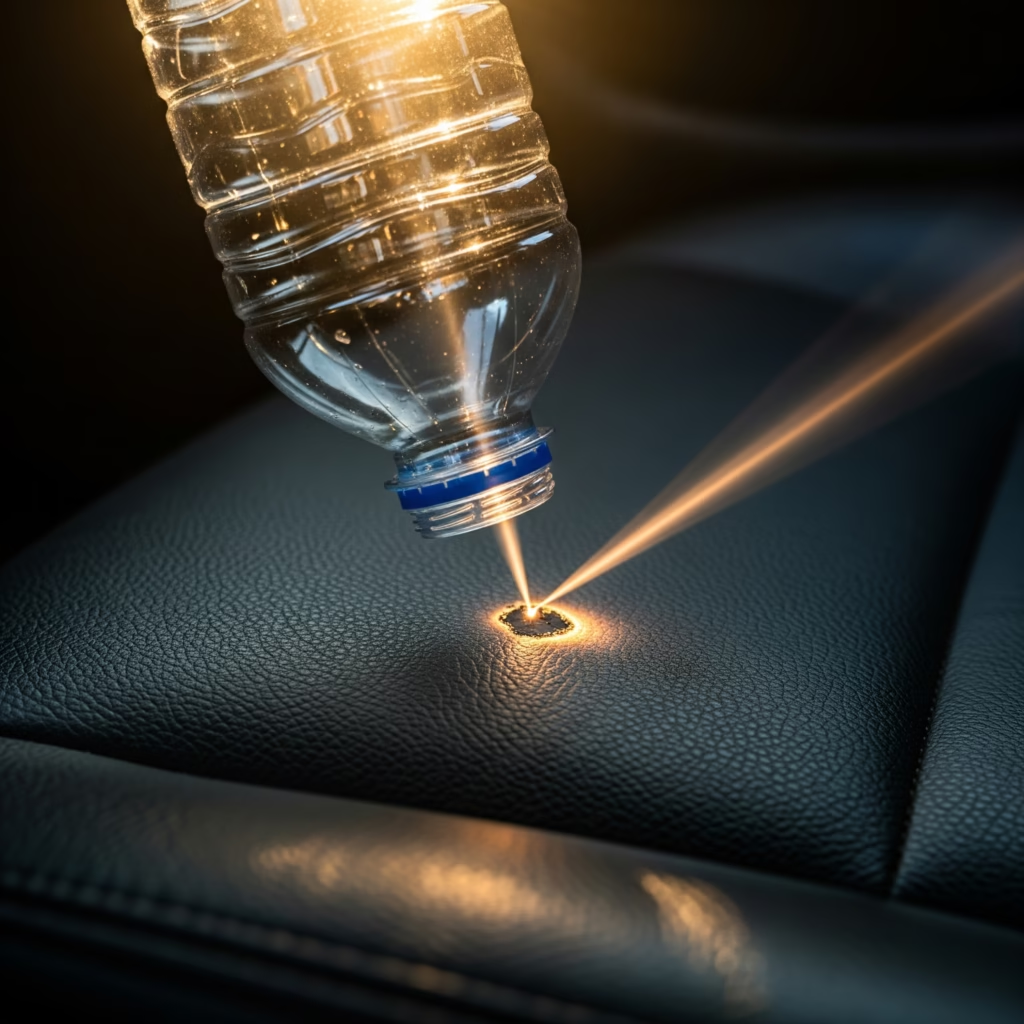
Here’s one that sounds like a myth until you realize it’s actually happened: a clear plastic water bottle can act like a magnifying glass.
Under just the right conditions—strong direct sunlight, the right angle, and a seat or paper as a base—some bottles can focus sunlight into a tight beam, just like those old-school science experiments where you burned holes in leaves.
A man in Idaho filmed his truck seat actually smoldering because a half-full water bottle had focused sunlight onto the upholstery. Wild, but real.
Is it super common? No. But is it worth the risk? Also no.
Let’s Talk About Cars and Interior Damage
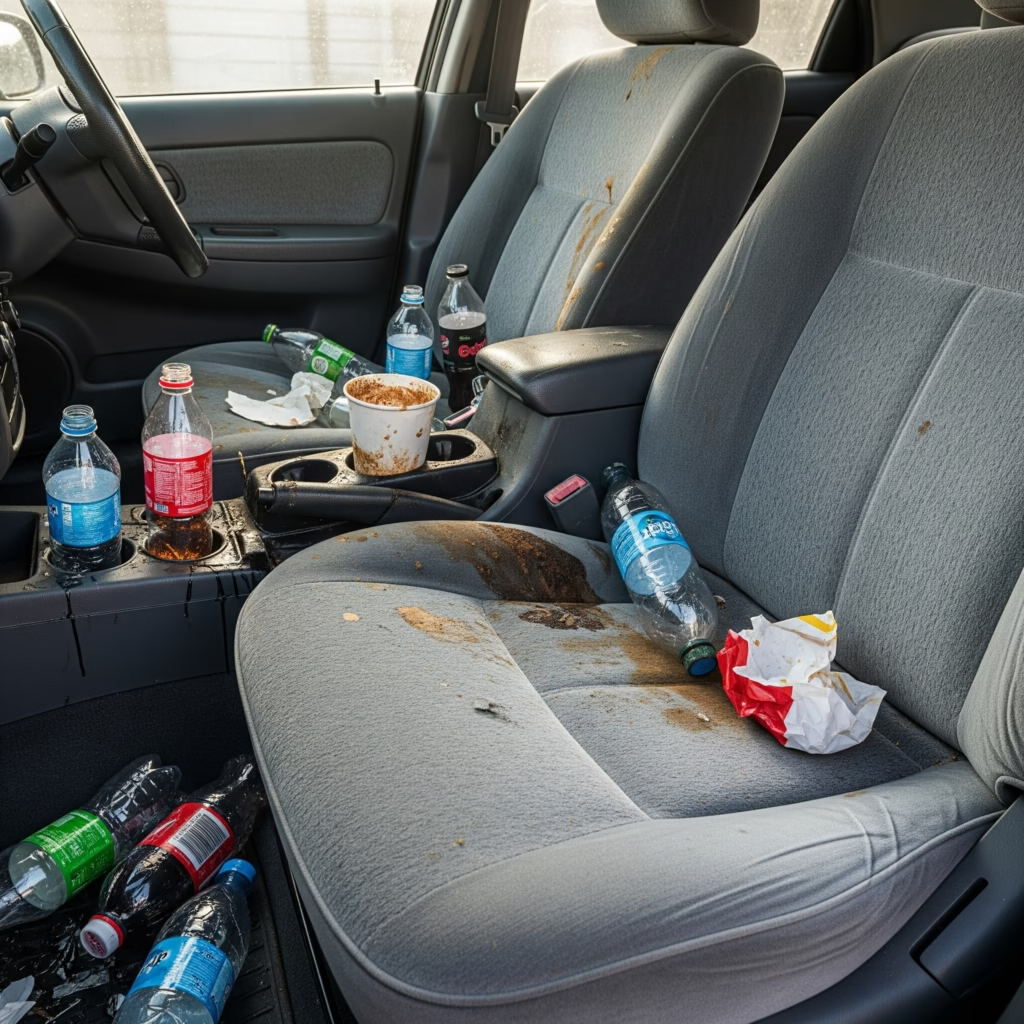
Even if we step away from health and safety, there’s the cosmetic side of things.
Heat speeds up plastic degradation, which means over time, those abandoned bottles can start to smell funky, leak, or even fuse slightly with your car’s interior if left long enough. Nobody wants that mystery to be a good situation.
And if you’re a neat freak or have kids, you know how quickly one forgotten bottle turns into five. Which then turns into that “junk car” look. Not exactly Instagram-worthy.
So What Should You Do Instead?
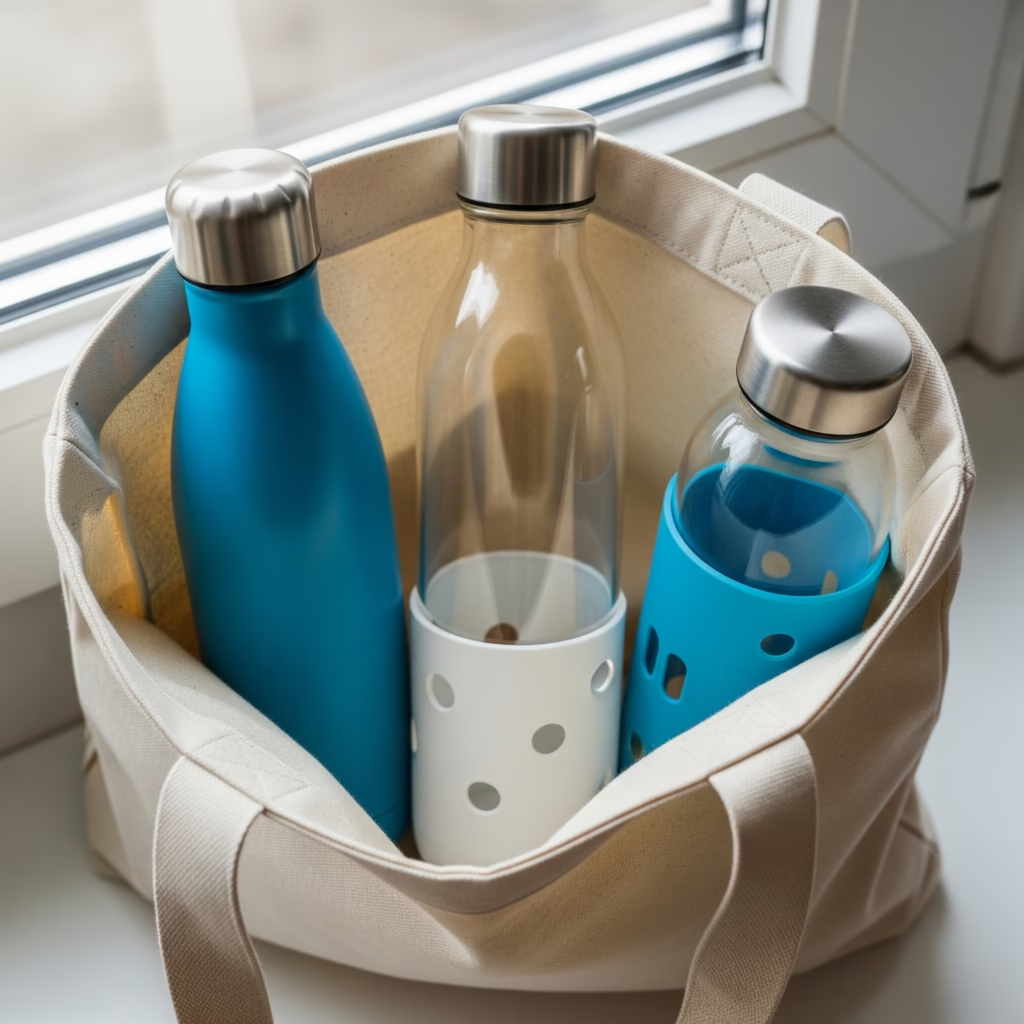
It’s simple. Just don’t leave them behind. Here’s what works:
- Switch to stainless steel or glass water bottles. Brands like Hydro Flask, Yeti, or Lifefactory make bottles that are built for durability—and they don’t mess with your hormones.
- Take them with you—every time. Make it a habit, like grabbing your phone or keys.
- If you must leave one, at least stash it in the trunk or a shaded cooler. Still not ideal, but slightly better.
- Clean reusable bottles often—especially the lid. Warm soapy water goes a long way.
Honestly, it’s one of those small life tweaks that seems annoying at first… but you won’t miss it once you get used to it.
A Quick Tangent About Hydration Culture

Can we take a second to talk about how weirdly competitive hydration’s gotten?
Like, we’re living in a time where people are carrying around gallon jugs labeled “Almost there!” and “Keep drinking!” as if it’s a CrossFit challenge. Hydration is important, sure, but it’s also turned into this lifestyle flex.
And the irony? A lot of those jugs are made from the exact plastics we’re warning about—thin, squishy, cheap bottles not meant to last. Just something to think about while you’re logging your eighth glass of the day on an app.
The Bottom Line: Small Habit, Big Impact
This isn’t about scaring you into tossing every plastic bottle in your car like it’s toxic waste. But it is about awareness.
Leaving water bottles in your car might seem harmless—until you stack up the health risks, the fire hazard, the bacterial potential, and, yeah, the gross factor. With summer heat on the rise and more folks on the road, now’s a good time to tweak the habit.
Just grab the bottle on your way out.
You’ve already got your phone, your keys, your coffee. One more thing won’t kill you—leaving it behind just might.
